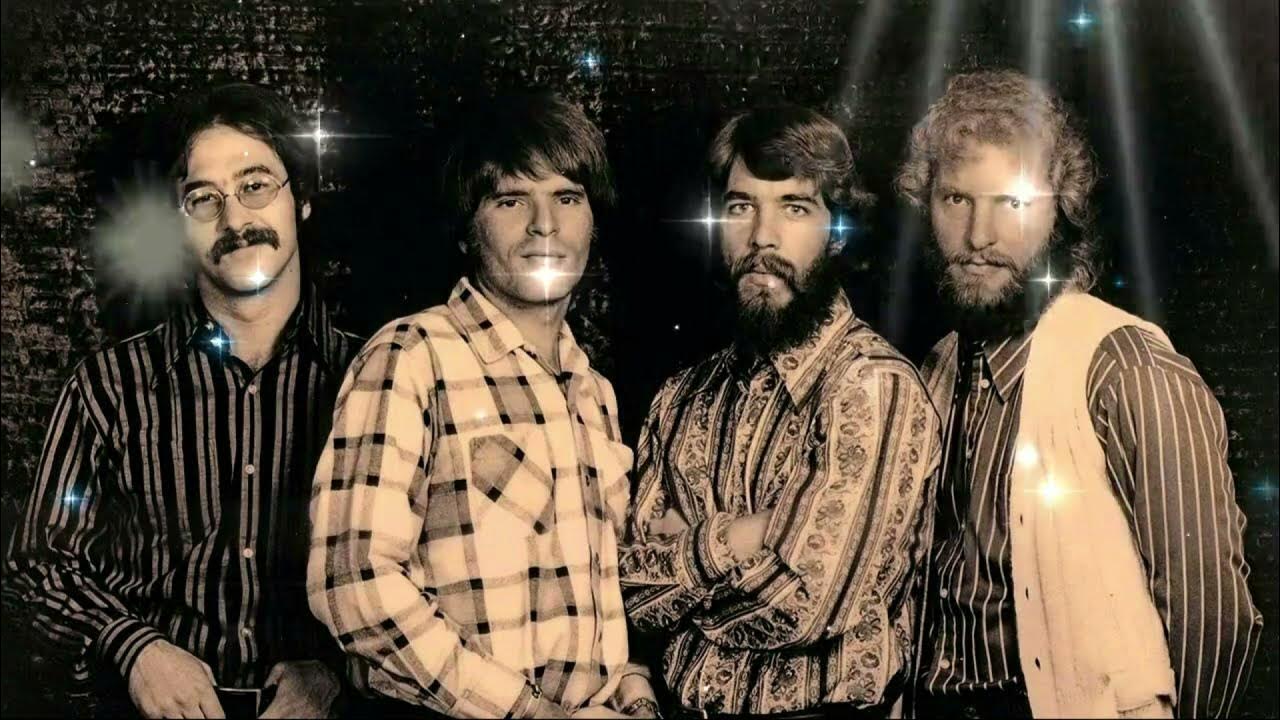
A breezy corner jam turned album heartbeat—Creedence Clearwater Revival’s “Poorboy Shuffle” is CCR’s jug-band daydream: all pocket, no pretense, a porch-step grin between bigger storms.
Let’s anchor the facts before we follow the feel. “Poorboy Shuffle” is an instrumental on Willy and the Poor Boys (released October 29, 1969), cut at Wally Heider Studios, San Francisco and placed side one, track four, right before “Feelin’ Blue.” It runs about 2:25–2:27, is written and produced by John Fogerty, and—like the rest of the LP—features the four core players with Russ Gary engineering. The album itself climbed to #3 on the Billboard 200 and later went RIAA 2× Platinum.
What you hear is CCR wearing the “Willy and the Poor Boys” alter-ego they invented for the cover photo: a street-corner string band that plays for smiles and pocket change. The track’s jug-band DNA is the point—John Fogerty’s harmonica carries the tune while the others work up a good rattle and thump. Contemporary write-ups and retrospectives hear washboard in the scrape, a washtub-style thump under the beat, and guitar figures that keep the pocket tidy: it’s the album’s visual scene rendered as audio.
There’s a sweet little origin tale, too. Accounts tied to Fogerty’s memoir and the cover shoot at Oakland’s Duck Kee Market recall the band jamming this very groove on the sidewalk while the photographer reloaded—CCR in character as the fictional Poor Boys, making music to pass the time. Back at Wally Heider, they bottled that moment as “Poorboy Shuffle,” then sequenced it so you’d hear the street before the night falls in “Feelin’ Blue.” It’s one of those album decisions that makes the record feel lived-in.
Musically, the cut is a master class in leaving air. Doug Clifford taps a lazy, reassuring pulse; Stu Cook’s bottom end nudges more than it insists; Tom Fogerty saws a small, steady rhythm while John answers himself on harp with short, good-humored phrases. No hot-shot solo, no studio gloss—just a pocket that feels like sun on a storefront window. AllMusic calls it “lazy jugband blues,” which is exactly how it lands in the run of the side: after the tight snap of “Cotton Fields,” this two-and-a-half minutes lowers your shoulders and opens the room.
As sequencing, it’s shrewd. Side one of Willy is a little neighborhood: “Down on the Corner” (the radio invitation), “It Came Out of the Sky” (tall-tale snap), “Cotton Fields” (Lead Belly by way of CCR), then “Poorboy Shuffle”—a wordless breather that hands you the keys to the album’s world before the longer exhale of “Feelin’ Blue.” That framing helps explain why the LP holds together so warmly despite its big marquee moments (“Fortunate Son,” “Effigy”): the record always brings you back to the corner.
Why does a tiny instrumental like this still glow for older ears? Scale and honesty. CCR could roar when they wanted, but they also knew how to sound human-sized—music for kitchens, garages, and long, easy drives. “Poorboy Shuffle” is three musicians keeping a groove while a fourth grins through a mouth-harp line; it asks nothing of you except to breathe with it. In a year (and an album) full of headlines, the track offers companionship instead of commentary, which is its own kind of grace.
Listen for the little mercies: the backbeat sitting a half-step behind the bar (reassuring, not insistent), the gentle scrape that functions like a washboard smile, the way the harmonica phrases witness and then step back. Nothing “happens,” and yet everything does—the room changes temperature, and suddenly the rest of the side makes deeper sense.
Scrapbook facts, neat and true
- Artist: Creedence Clearwater Revival
- Song: “Poorboy Shuffle” — instrumental; ~2:25–2:27; side 1, track 4; writer/producer: John Fogerty; studio: Wally Heider (SF).
- Album: Willy and the Poor Boys (Fantasy, Oct 29, 1969) — Billboard 200 peak #3, later 2× Platinum.
- Vibe & instrumentation: widely noted as jug-band-style, with harmonica lead and skiffle textures (washboard/washtub feel) evoking the album cover’s street-corner band.
- Anecdote: the groove was reportedly born during the album-cover street session, then cut properly back in the studio.
Put it on today and let it reset the room. For two unhurried minutes the world gets small, the rhythm gets friendly, and you remember what CCR did as well as anyone: make music that belongs to everyday life—and makes that life a little lighter.